ProAgri

Jupidex: Helping you farm for a sustainable future









Jupidex: Helping you farm for a sustainable future







You may have heard soft rumblings of the next best thing in agriculture, of the future of agriculture, the new face, the new way of doing things …
Pressure on farmers is high. A growing world population, estimated to reach nearly 10 billion by 2050, means a growing demand to produce more food. But more people will also require more housing and industrialisation, and that will mean less land for farming.
Precision agriculture is a farming approach that uses technology to optimise crop management and improve productivity. The term precision farming is used more and more amongst farmers and agricultural companies globally.
We recently attended the Kverneland Group Exclusive Journalist Event in Bad Sassendorf, Germany, where it was evident that farming in Europe is distinguished by the fact that it achieves high productivity on less land, and precision farming has become rapidly diffused thanks to its compatibility with the country's pursuit of efficiency.
Behind the rapid diffusion of precision farming is the fact that it is necessary for sustainable agriculture. Precision farming is extremely effective for gaining a high yield from scarce resources, and developing agriculture that is resilient against


rapid climate changes, as well as reducing environmental load.
Precision farming is a knowledgeintensive farming system. We already have an abundance of tools and technology necessary for putting precision farming into practice, but the problem is that the situation is not yet well understood by all farmers. They wonder how they can use the system, or how they can go about putting to use the data gathered by sensors. It is necessary to provide training and guidance through precision farming promotion programmes and other means. Agriculture is changing dramatically, and we should keep up, or fall behind. To turn your agribusiness into a sustainable business, you need a partner with the best and leading agricultural solutions to be with you every step of the way.
The ProAgri team remains true to our commitment to deliver free and informative content, to help farmers make more informative decisions, helping you to farm smarter, not harder!
Enjoy this edition!
ProAgri greetings Bianca Henning bianca@proagri.co.za




Regenerative agriculture: Syngenta leads the way
Precision Farming: Jupidex and Kverneland aim higher, further, better
Senter360 has the perfect pivot propulsion for you
BSi Steel explains the danger of using low quality steel
Tips from Novatek Aquaculture: Disease and health management
Prevent unnecessary losses in broiler production – part 1
Fruit Production part 8: Strawberries
Land management and rehabilitation part 4
UFCL: The importance of balanced fertilisation
Livestock identification part 1: Ear tags
Chicken breeds part 1: Broilers
The latest in agricultural technology from around the world
Food for Africa: Amaranth
How to grow pumpkins
African farmers learn all about goats
Syngenta has been the provider of agricultural services and products in Zambia for over fifteen years with proven recognition as an industry leader in Zambia and surrounding countries.

Editor
Bianca Henning >
Reporters
Benine Ackermann > Maryna Steyn >
Natasha Pansegrouw>
Specialist Writer
Annemarie Bremner >
+27 82-326-2572
bianca@proagri.co.za
+27 73-105-6938
benine@proagri.co.za
+27 82-261-9177
maryna@proagri.co.za +27 81-736-4236
natasha@proagri.co.za +27 82-320-3642
annemarie@proagri.co.za
Senior Production Manager
Zainab Pandor >
+26 (0)97-769-9786
zainab@proagri.co.za
Client Relations Manager
Carin Swartz >
+27 84-233-0123
carin@proagri.co.za
Marketing Manager
Diane Grobler >
Marketing
Xander Pieterse >
+27 82-555-6866
diane@proagri.co.za
+27 62-391-6507
xander@proagri.co.za
Johan Swartz >
+27 71-599-9417
johan@proagri.co.za
Tiny Smith >
+27 82-698-3353
tiny@proagri.co.za
Lynette van Tonder >
Head of Design
Michelle Kruger >
Design
Anja Oosthuizen & Enquiries
Engela Botha >
+27 74-694-4422
lynette@proagri.co.za
+27 84-416-1780
michelle@proagri.co.za
Jamie-Lee Tromp
+27 73-663-1234
engela@proagri.co.za
Distribution and subscription
Nita Volmer-van Zyl >
Accounts
Ronel Schluter >
Business Manager
George Grobler
+27 79-515-8708
nita@proagri.co.za
+27 84-088-0123
accounts@proagri.co.za




Article Supplied

AtSyngenta, we are dedicated to keeping pace with the ever-changing world of agriculture. Two buzz phrases that have risen to prominence are "Regenerative ag" and "Soil health." But what exactly do these terms mean, and how is Syngenta leading the way in this important journey?
Agriculture plays a vital role in addressing climate change. By capturing carbon in the soil, reducing land use, and adopting regenerative practices, agriculture can make a significant impact. Regenerative agriculture focuses on practices that minimise soil disturbance and conserve resources, ultimately reducing greenhouse gas emissions from farming.
It is important to note that there is no one-size-fits-all solution, and quick fixes will not solve the problem. To embark on the regenerative agriculture journey, farmers must understand their land and soil, and be willing to commit to a long-term process.
Here are some basics of regenerative agriculture:
• No-till farming: Instead of traditional ploughing, regenerative agriculture encourages planting seeds directly into the soil shortly after the previous harvest. This method minimises soil disruption and maintains its structure.
• Crop rotation: Crop rotation is a cornerstone of regenerative agriculture. It boosts biodiversity, enhances soil quality, and increases carbon content. Following a con-
sistent rotation plan, regardless of market fluctuations, is crucial for soil health and resilience.
• Crop residue preservation: After harvesting, leaving crop remnants in the field prevents erosion and allows carbon and nutrients to be reabsorbed into the soil. This simple practice significantly improves overall soil health.
Remarkable Outcomes of regenerative agriculture:
• Adopting regenerative practices delivers impressive results, especially in regions like Sub-Saharan Africa.
• Stronger roots: Regenerative practices lead to deeper and more robust crop roots, ensuring better access to nutrients and water.
• Healthier soil: Over time, the soil undergoes positive changes, including increased earthworm activity and reduced compaction, which helps prevent soil erosion and runoff.
• Improved moisture retention: Regenerative agriculture helps soil hold onto moisture, reducing reliance on unpredictable rainfall.
• Consistent yields: Regenerative practices yield better results in both good and challenging seasons, providing invaluable resilience for farmers.
• Pest and disease resistance: A diverse range of crops makes it harder for pests and diseases to devastate entire fields.
• Market resilience: A wider variety of crops ensures resilience against market fluctuations, reducing vulnerability to price swings.
Regenerative agriculture is not just a passing trend; it is the path to a more sustainable and resilient agricultural future. At Syngenta, we are wholeheartedly committed to leading this transformative journey.
While there are no shortcuts, the benefits of regenerative agriculture, including improved soil health, reduced environmental impact, and increased resilience, make this endeavour worthwhile.
As we face global challenges headon, embracing regenerative agriculture is a powerful step toward a more sustainable and promising future.
Syngenta is committed to working with dedicated farmers and stakeholders to cultivate change and nurture a greener, healthier planet for a more sustainable agricultural future.
To learn more about regenerative agriculture, visit this link: https://www.syngentagroup.com/en/ regenerative-agriculture

Dietrich Schlüter, Production Manager of Kverneland Soest, Germany, with Arthur Bezuidenhout, Managing Director of Jupidex, and Martin Nordhaus, Managing Director of Kverneland Group for Germany at the Kverneland factory in Soest.
Kverneland is a name that resonates sweetly in the ears of South African farmers. It is the name that has become synonymous with meticulous, punctual service and the leading, most efficient agricultural technology.
Jupidex is the proud distributor of Kverneland's world standard agricultural equipment in South Africa and now also in Africa!
Over the years, Kverneland has delivered only the best craftsmanship and excellence. Ole Gabriel Kverneland founded Kverneland in 1879. Today, the Kverneland group has factories around the world, in Norway, Denmark, Germany, France, the Netherlands and Italy, among others.
The ProAgri team had the wonderful privilege of visiting their planter factory in Germany with the Jupidex team and the Kverneland group during August 2023, as well as attending the International Precision Agriculture Congress hosted by Kverneland.
Arthur Bezuidenhout, Managing Director of Jupidex (Pty) Ltd says: "We only want to offer the best for our farmers. We encourage farmers to increasingly make use of precision farming methods, and this is precisely why we are involved in these events; to sharpen our expertise and equip farmers in South Africa and Africa with world-class equipment taking their farming forward."
Yasukazu Kamada, President, and CEO of Kverneland Group also shared the group's vision and aspiration: “Our vision is to be a leading supplier of intelligent and efficient farming systems that contribute to sustainable agriculture to support the world's growing population. Our mission is to develop new technology and support farmers.

Izél Grobbelaar, Marketing Coordinator, and Arthur Bezuidenhout, Managing Director of Jupidex during the recent visit to Germany.
We want to provide customers with products, systems, and services of superior value and standards.
“Our products and innovations make a positive contribution, not only to farmers across the entire value chain, but also to contractors for long-term success."
Izél Grobbelaar, Marketing Coordinator of Jupidex, says: "It is an honour to attend this event. We are not only the only African country, but also the only country outside Europe to attend the event. It means a lot to us to take agriculture to the next level for our farmers. For us it is important to breed and keep abreast of new developments. "Our focus as Jupidex is so well in line with the mission and vision of Kverneland, especially with regard to the quality products they bring to the market. We want to make sure we offer farmers the best quality and robust machines for African conditions.”

The PUDAMA Optima SX precision planter places fertiliser exactly where the plants' roots are looking for it.
The factory tour in Soest was a real experience. Soest is a small town north of Frankfurt in Germany. At this factory, the Kverneland group mainly manufactures planters and sowing equipment.
The Kverneland group has five plants in Germany: Soest, Klepp, Nieuw Vennep, Les Landes, and BCT.
The high standards of mechanisation technology and what is accomplished here is amazing! From the design, which is constantly improved and refined according to farmers' preferences, to the advanced factory equipment and skilled, dedicated craftsmen, Kverneland is an example of the best materials, the highest manufacturing standards, and the purest precision.
Arthur says: "The factory visit was once again an experience for us, to see how precisely and neatly the tools are manufactured. To look at the scale of the factory and the operations here, as well as the quality, control processes and standards at which these world-class
Farmers are under constant pressure to reduce the use of pesticides, but also to increase yields to feed a growing population. The Kverneland Group has introduced new mechanical weeding solutions to help farmers achieve those goals. The Lynx, Helios and Onyx mechanical weeding equipment destroy weeds without damaging your crops and help aerate the soil while maintaining the moisture levels in your soil.
PUDAMA is the name of a technique that enables precision fertiliser placement under seeds during planting. Kverneland says up to 25% less fertiliser can be used without affecting yield.
Yes, you heard right! This is what PUDAMA can do for you.
Instead of a continuous flow of fertiliser, this system places your fertiliser
exactly under the seed, where it belongs. This helps the roots of the young plant to absorb the necessary nutrients immediately.
"I think it is important for us to understand that agriculture is accompanied by various challenges, especially in Africa," says Arthur.
"The demonstrations from Kverneland proved that the new technology helps the farmer to get more with less. This means more profit in the farmer's pocket."
"Kverneland's hay equipment now includes the new ROC Merger, which we are very excited about," says Arthur. "With alfalfa crops being increasingly produced in South Africa and in Africa, I believe the ROC Merger is the perfect solution for farmers, enabling them to pick up the entire crop from the ground, without nutrient losses or any parts of the crop being left behind," he adds.
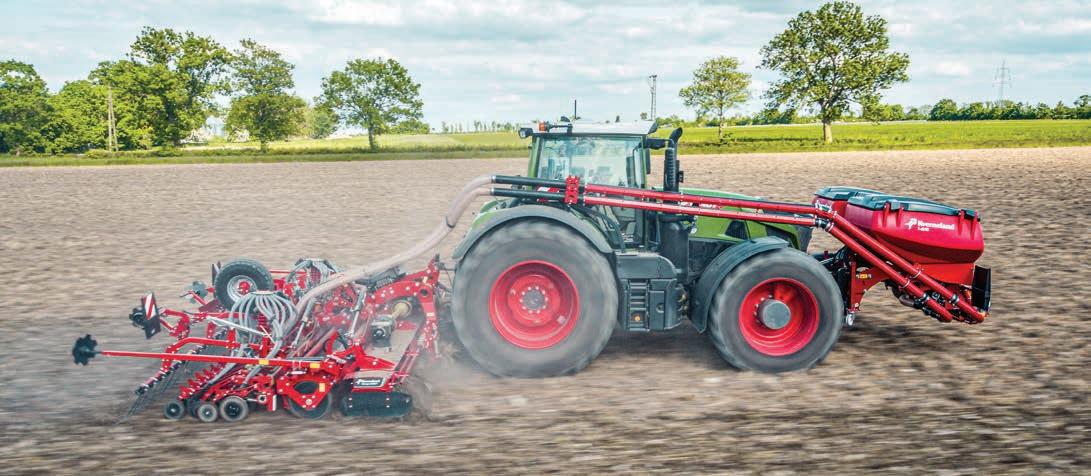
products are being built is something that really stood out to us.
“It is a great honour for us to see and to be reassured knowing that we have joined hands with the right people in the industry. Kverneland does an excellent job of ensuring that customers are involved in the process of determining their needs, and that these are included in the design and manufacture of the products. This is something we can take back to our customers.
“Technology and precision farming are increasingly being applied by farmers worldwide. Globally, industries are turning to integrated digital equipment that promises increased productivity. During the visit to the Kverneland congress, several new world-class precision tools were introduced, and we had the privilege of experiencing them first hand!”
The Rotago 4060 F power harrow with the pre-mounted F-drill seed tray simplifies farmers' work and saves time by reducing multiple operations to one with the dual-purpose tiller/planter combination.

Unique features of the ROC RS 1000 Merger:
• New short crop solution
• Innovative roll design
• Efficient operation and swing in all crop variations and conditions
• Specialist in silage making too
• Mergers ensure even windrows over larger portions of your fields
• Less labour and less fuel consumption
• Efficient and sustainable
Rotago F is Kverneland's new generation power harrow, and its unique features include quick and easy adjustments. A uniform, level seedbed gives each plant the best chance to develop and facilitates the harvesting process.
The new Rotago F power harrow is ISOBUS ready. The working depth can be adjusted on the move so that no time is wasted, and it has a levelling bar to ensure that the land is perfectly level.
The tool has been designed from



mounted tank.
scratch and is ready for all future farming concepts and challenges.
The Kverneland Rotago F is available in various working widths and folds up easily to pass through gates.
Another highlight was the discussion of the TwinFill iXter B18 rear-mounted sprayer with its combination iXtra front-mounted tank.
TwinFill is new software for the automatic filling of the front and rear mounted sprayer. The software ensures that the spray liquid is divided and transferred to the front and rear
combination
tank with the right volume and equal concentration.
TwinFill is particularly beneficial for medium-sized grain farmers, vegetable farmers, and contractors in mixed farming areas. The operator can simply enter all the ingredients in one step up to the total required tank volume of the two tanks together or for the area to be sprayed, without having to measure everything twice and in different quantities and fill the tanks separately!
"If we look at the new spray solutions we have already launched in South Africa, we can sell these new products with their new add-ons and additional features even more easily," says Arthur.

“I'm very excited about what we have seen so far, especially with the new precision spray solutions. It is very exciting, and I think we are one of the very few companies in Africa to provide this to our farmers."
"After the field demonstrations, it is clear that Kverneland does not play around, especially not with regard to their durable implements, and this is exactly what we want to take back to our customers to ease their work and increase their profitability.
"When you look at the technology available to farmers these days, I think especially in Africa we only use a small portion of it. With Europe as world class leaders and at the forefront of agricultural technology and innovation, I truly believe that this is a great opportunity for us as Jupidex to introduce these tools to our African farmers. We look forward to spending on this and seeing this equipment flourish in the African market by 2030," he says.
Since 1999, farmers in South Africa have been familiar with Kverneland equipment. "Over the years, with Kverneland as partner, we have shown our farmers that we are here to stay. We are committed to the success of our farmers. In 2024 we celebrate our 25th year as partners with Kverneland. It is also a great highlight for us to show our customers that we are committed and ready to invest further in the agricultural industry; not only in South Africa, but also crossing borders into Africa," says Arthur.
Jupidex focuses on sustainability and the future of agriculture
Izél states: "Kverneland focuses on efficient, smart, and precision technology for farmers, and this is what we as the Jupidex group also want to bring to the table. For Jupidex it is very important to understand the needs of our customers, especially with Africa now part of our distribution area and part of our bigger picture - to have the solutions for our farmers on the table, helping them to be more productive in the field and more profitable. With the knowledge that is available, we can also help farmers to make more informed decisions and farm sustainably.
"For us, it is very important that we take the information we gather at such events back to Africa and demonstrate it to our farmers by hosting farmer and demonstration days, and also attending exhibition days and expos to all to answer the questions that farmers have," explains Izél.
"We want to make it work for everyone who wants to invest in the Kverneland brand name and with Jupidex


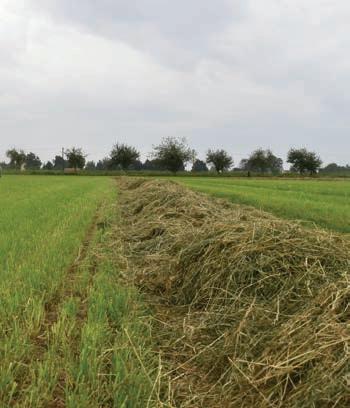
The ROC 1000 picks up cleanly and makes lightning fast windrows.
as a partner. A big and even better future awaits with Kverneland. We look forward to introducing this new equipment to our farmers by the end of the year and early 2024," concludes Arthur.
Jupidex and Kverneland are committed to offering only the best to farmers. Jupidex ensures that their technical specialists in the field are up to date with the latest technology to advise and support farmers where and when needed. Watch Jupidex's website and social media platforms for the launch of these exciting new tools.
The Jupidex group is pleased to introduce the latest agricultural and especially precision technology to farmers. Visit their website at https://www.jupidex. co.za/ or call (+27)33-386-3574 for more information.
WHOLESALE
TRAVELLING IRRIGATORS.








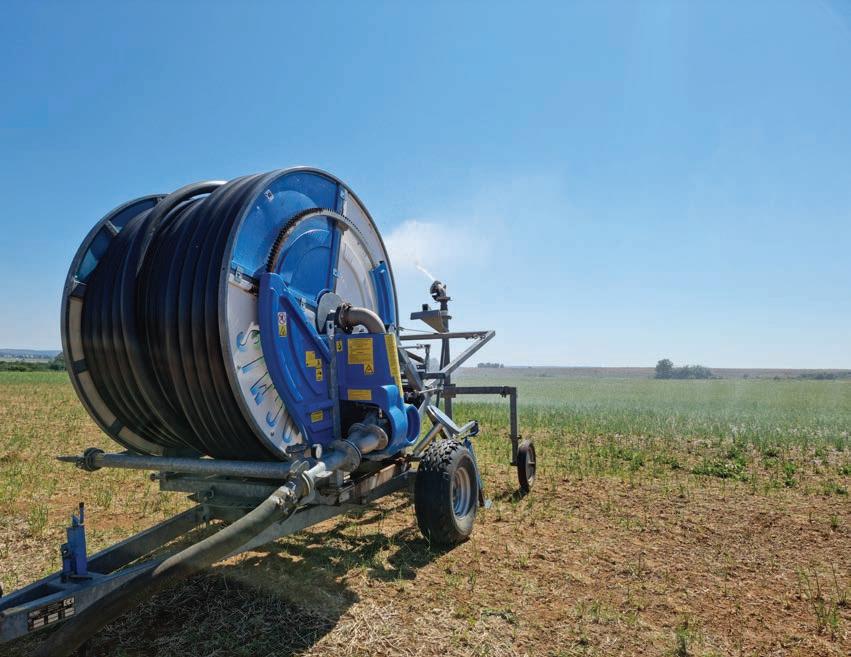
BUTTERFLY & WAFER VALVES
CAMLOCK FITTINGS
CLAMPS
COMPRESSION & SADDLES
FITTINGS FOR PVC PIPES
FLANGES & JIS
MALLEABLE FITTINGS
MULTI RANGE FITTINGS
POLY PROP FITTINGS
QUICK COUPLING FITTINGS
QUICK COUPLING ACCESORRIES
RAIN BIRD
VALVES & BRASS FITTINGS
TANK CONNECTORS
SIME GUNS
VYRSA


• 1ha – 4ha Single tower, electric, water or petrol driven center pivots available
Starting at R130 000
• 3ha – 100ha+ Electric pivots
• 3ha – 100ha+ Solar Grid Tie pivots
• 3ha – 10ha Solar standalone pivots
The best sprinkler packages YOU ALREADY TRUST US
Having the strongest structure in the industry Best reliability


Senter360 pivots are well known for their strong structure and durability due to of their construction of high quality steel pipes. The pipe structure is lighter and more wind resistant than angle iron.
Senter360 offers farmers across Africa centre pivots that can perform and last in the tough African conditions. Their pivots are manufactured in South Africa.
“Our pivots are available with a four wheel drive system for clay areas and are fitted with tyres that are specially made for Senter360,” says Theuns Dreyer, Managing Director of Senter360. “The main idea is that it will not cause deep wheel ruts like some others.
“All the trusses on the system are made of steel pipe, unlike the typical angle iron structure. The advantages are a super strong structure and less wind resistance to prevent the pivot from toppling over in strong winds.
Senter360 has a propulsion system suitable for every purpose. It can be water, electrical or petrol driven.
The water driven unit uses only water pressure to propel the pivot. No electricity is needed at the pivot circle. The petrol driven system is more adjustable with its engine that uses 1 litre of petrol per hour.
With the electric propulsion system, the farmer can adjust the quantity of water that he wants to apply. The system will choose the speed needed to complete one rotation, from three hours to three days.

The electric system can also work with Senter360 solar panels.
Senter360 also has larger, higher pivots for taller crops. Theuns says: “The standard pivot has 3 metres crop clearance for crops such as maize; one with a higher profile (4 metres) for sugar cane; and a 5-metre high one for bananas or crops that grow extra tall.”
All Senter360 pivots can be towed to other circles to gain the most benefit from your existing equipment.
Investing in proper sprinklers is really worth your money. “Senter360 pivots use a very high quality movable sprinkler. A unit inside the sprinkler rotates to cut the droplets into specific engineered sizes and get 97% water applied into the soil,” he added.
“The control system is a stainless steel cabinet with quality epoxy coating to ensure a long life. The standard system
can be fully automated with full control from your smart phone,” says Theuns.
The farmer downloads the app for free. It is a web based system that the farmer can manage from his cell phone or computer. Any change of the pivot is reported to the farmer immediately through the app.

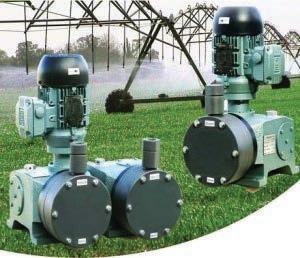

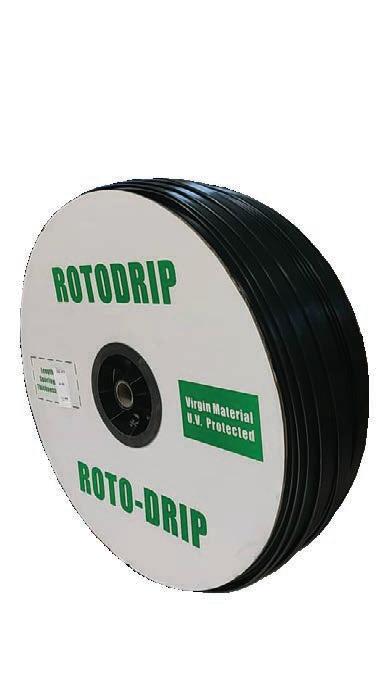







Using high-quality steel for the erection of steel structures not only ensures the longevity of your structure; it also ensures your safety. For the prominent steel supplier, BSi Steel, it is important that customers understand this principle, especially when keeping costs low is a priority.
“The first thing clients need to understand is that the lifespan of the product is shortened if low quality steel is used,” says Gary Hodgkinson, Senior Trader in Lusaka.
“It also causes safety hazards, especially if under gauging is used for structural steel. Cheap ends up being expensive.”
Gary explains that structural steel has the highest risk, for example, low grade reinforcing bar used in two- or three-story buildings. The reinforcing bar ordered is 12 mm, but the contrac-
tor supplies 10 or 11 mm diameter reinforcing bar. The invoice will show 12 mm and to the naked eye, you cannot tell the difference. The result can be a collapsed building and loss of life. “It is more prolific with flat sheet products,” he adds. “Some manufacturers are profiteering off the backs of hard-working customers.
So, how do you know if the steel you purchased is high or low quality?
“Sometimes it is easy. For instance, round tubing has a split seam, or the welding creates holes because the gauge is too thin. The best way to ensure you receive high quality steel is to ask for the material test certificates.”
When looking for high quality steel products, customers can:
• Measure the steel using a digital micrometer. Tubing and flat sheet are almost always under gauged.
• Ask for test certificates.
• Purchase from reputable companies that provide official tax invoices. If they cannot, this is the first red flag.
BSi Steel ensures products are of the highest quality by purchasing from the best steel mills. “We have test certificates for all our material,” Gary says. “Our brand is also known for high quality material and excellent customer service.
“Furthermore, we make sure that the material ordered is from the correct supplier and we measure it to determine its legitimacy. We conduct spot checks on our material for any damages.”
saleslusaka@bsisteel.com
www.bsisteel.co.za



The success of fish farming whether conducted in cage or pond systems, hinges on maintaining the well-being and health of the fish population. In this article, we will discuss key strategies for


be consistent, and feed distribution should be monitored to prevent uneaten feed from accumulating.



Disease outbreaks can devastate a tilapia farming operation. Preventive measures play a pivotal role in maintaining fish health. Regular sampling can help detect potential issues early and quarantine protocols for introducing new fish stock can prevent the introduction of pathogens. Minimizing stressors such as handling, and transportation is crucial as stressed fish are more susceptible to pathogen invasion.
Implementing strict biosecurity measures can significantly reduce the risk of disease outbreaks. In cage farming, ensuring that cages and equipment are regularly cleaned and disinfected can help prevent the buildup of pathogens. Pond farmers should avoid introducing potentially contaminated water or materials from external sources. Ensuring all personnel wash their hands and step through a disinfecting foot bath is one small way to reduce the chance of pathogens entering the farm.
optimal growth and health of fish. Overfeeding should be avoided, as it can lead to excess waste production and decrease water quality. Feeding schedules should
Like other fish species, tilapia rely on water temperature for their body temperature. Therefore, changes in water temperature, especially sudden changes can negatively affect growth performance and cause mortalities. When
transferring fish into a body of water it is essential to slowly adjust the water to the body of water you plan to introduce them into.
Regular monitoring and thorough recordkeeping are fundamental for successful tilapia farming. Keeping track of water quality parameters, feeding schedules, growth rates, and any health issues can provide valuable insights into the overall health of the fish population. Detecting trends or anomalies early enables timely intervention and adjustments to farming practices.
Maintaining good tilapia fish health requires a holistic approach that encompasses water quality management, nutrition, disease prevention, biosecurity, temperature regulation, and diligent monitoring. By implementing these strategies, fish farmers can create a conducive environment for tilapia to thrive, ensuring sustainable and profitable aquaculture operations.
Novatek is well known as Zambia’s leading stock feed producer and distributor. They pride themselves in supplying the best quality feed across the country. For information on Novatek’s wide range of products and quality feed, contact Robert Kanyembo, Novatek National Sales Manager on (+260) 97-125-2522.





















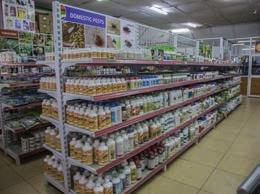








Broiler chicks are very frail, especially during the first few weeks of their lives. It is therefore important to have sound management knowledge to keep them healthy.
Moreover, despite the quality chicks supplied by the hatchery and the efficiency of management, early chick mortalities cannot be avoided entirely on a poultry farm. However, anything higher than 5% should be taken seriously. A high mortality rate is an indication of something wrong with the birds, and it demands the poultry farmer’s immediate intervention and appropriate action to stop further losses as failure to do so may lead to unnecessary losses. The following are simple and common instructions that are often being overlooked by broiler farmers:
Biosecurity refers to management protocols to prevent the introduction and spread of disease/sickness onto a farm or flock. It is an integral management component of any poultry farm. Strong biosecurity management includes:
• Control entry of rodents, insects and wild animals.
• Continuously cleaning and drying all equipment.
• Ensuring at least 14 days downtime, full pen clean-outs and pen sanitisation between batches.
• Minimising the number of people visiting the pen/farm.
• Ensuring workers have clean uniforms, wear appropriate footwear.
• When entering chicken pen, workers/visitors should wash and sanitise hands and boots.
Stocking density affects the following:
• Flock performance
• FCR (feed conversional ratio)
• Growth rate
• Mortalities
• Litter quality
Optimal stocking density results in: Maximum economic returns, however, they depend on the environmental conditions, bird management and ventilation capability. Overstocking increases the environmental pressures on broilers and will reduce performance. In general,
stocking density should be reduced in hot climates and increased in cold climates. Stocking density determines the final processing weight – poor uniformity yields poor weight results.
Most farmers do not keep records and claim that they are not necessary. Record keeping assists in determining the effects of changes in the following:
• Nutrition
• Management
• Environment
• Health status
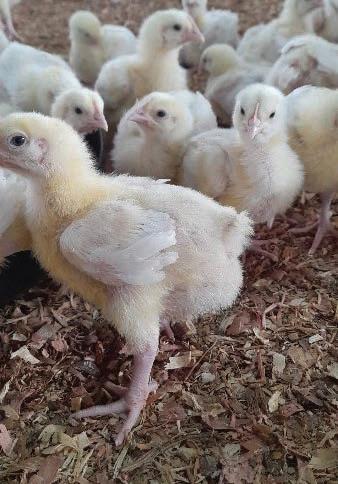
are essential for effective broiler management
The records should list the following:
• Daily feed intake
• Daily water consumption
• Weekly weight sampling
• Mortalities
• Medication usage
• Temperature readings
A sudden change in feed or water intake can often indicate some form of stress factor, disease, or other management issues. Records should provide a history so that problems can be quickly and easily detected. The more accurate records the farmer keeps, the
better he will be able to monitor the performance of each flock.
Six golden rules in broilerkeeping that should not be overlooked
• Do not use substandard equipment like drinkers, feeders, et cetera, as they increase spillage that leads to huge losses.

• Take time to observe birds’ behaviour and movement activities in the pen. This will enable you to notice abnormal behaviour.
• Use of charcoal during brooding increases carbon monoxide pollution in the pen, therefore it is important to improve the ventilation system to avoid metabolic disorders such as ascites and flip-overs.
• Ignorance is no defence, lack of knowledge on how to use antibiotics is dangerous and costly. Do not use antibiotics without consultation.
• Use of cheap and unexperienced manpower is more costly than is thought.
• Online supervision does not work in livestock farming. The decisionmaker (farmer) should be at the production site at all costs.
Act to serve your business, listen to professional advice to live longer in business.


Plastic manholes and covers for sewerage and communication Each tank
• Easy to install
• Fits all pipe sizes
•
• Strong, reliable, durable and safe.
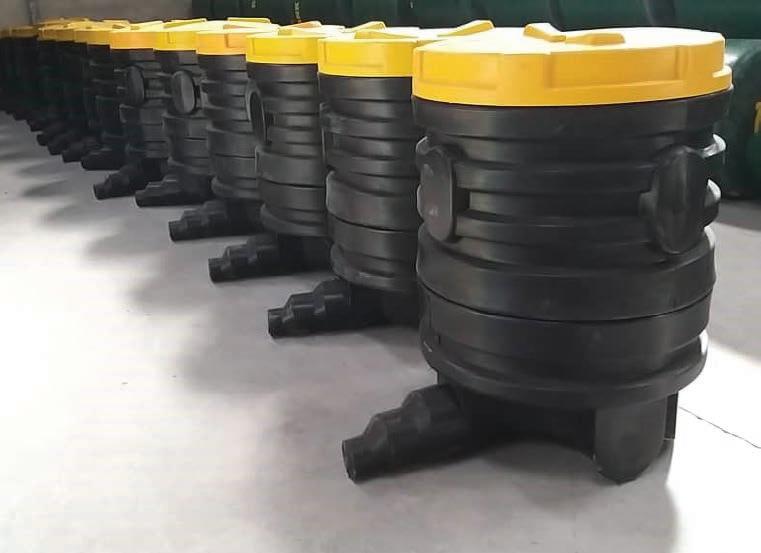
• Height adjustable No rust and valves

• Manufactured from food-grade materials.
• UV-resistant & non-toxic plastic




Strawberries are a high-value crop that can boost your profits when it is grown right. The red bulbous fruit is grown from various varieties of the Fragaria ananassa plant.
Technically, a strawberry is not a berry. The reason for this is because the seed (achenes) of this red fruit is carried on the outside of the skin, whereas other true berries have seed in the centre of the flesh. When it flowers, the delicate little white flowers are pollinated to form a single fruit.
Across the world, strawberry lovers enjoy the nutritious fruit in a multitude of ways. Where it is not eaten fresh in salads or as a snack, jams, sauces, juices and wine. It is most often made into an array of deserts. Filled with vitamin C, folic acid and potassium, you can shake the sweet-tooth guilt when opting for this fruit instead of sweets.
The top strawberry producing country in the world is China, accounting for more than 40%, followed by the
USA with 15%, and then Mexico, Spain, Turkey and Egypt, each accounting for 5%. In Southern Africa, the first strawberry varieties were introduced to South Africa in 1656. Since then, the country has increased production and now 90% of its strawberry production is all grown by local growers. Half of this amount is sold to the local fresh market, and the rest is either processed or exported to Eswatini, Namibia, Mauritius, Mozambique, the United Arabian Emirates, Qatar and Kuwait.
The plant is relatively easy to grow and fares well in a variety of production systems. This can include field planting (with straw or plastic mulch), tunnel or greenhouse production, and controlled climate production. Where a small-scale grower may not have suitable fields, strawberries can also be grown in pots or in vertical gardens. For the sake of this article, we will only look at open field systems.
Climatic and soil requirements
Strawberry plants are winter hardy. They prefer climates with colder winters but have mild summer temperatures. This is because plants go dormant in these areas from late autumn to early spring. In summer, the plants need at least six hours of full sun to improve their yields.
Depending on the variety, the day length needs differ. Some varieties are day-neutral or short day growers. The first flowers independent of day length, whereas the latter require a certain amount of daylight to flower. Strawberry plants will flower during spring or autumn.
The soil needs to be well-drained and rich in organic matter. Avoid planting in clay soil. It also needs to be slightly acidic, approximately between 5,4 and 6,5 pH.
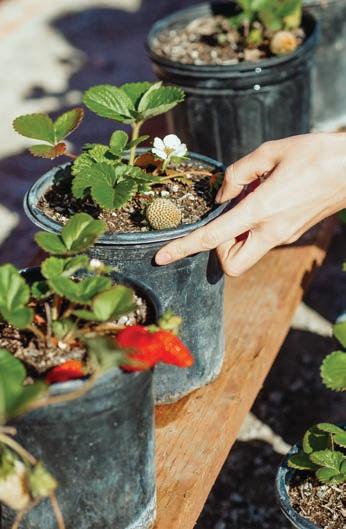
In the Southern parts of Africa, in climates where strawberries are produced, plants are planted from March to April (Autumn). By June to December the fruits are ready to be harvested.
Although strawberries can be grown from seed, it is far easier to grow them from seedlings or runners.

Runners are vine-like growth that extend from existing plants that form new off-shoots or plants.Once plants start to form these runners, you can peg them down, ensuring they form roots before you transplant them to a waiting bed for the next growing season.
If you are starting your strawberry farming operation for the first time, you can obtain your seedlings from a trusted nursery or strawberry grower. Prepare the soil by creating raised beds. This improves soil drainage. The plants are then carefully planted,

Strawberries require an average of 120 ha in summer rainfall areas and 180 ha of rain in winter rainfall areas. This roughly amounts to 15 mm to 25 mm of irrigation per week, depending on the stage of production. However, the frequency, amount and time of irrigation is all dependent on the soil type, weather, variety of strawberry.
It is difficult to grow strawberries on large scale without irrigation. Their shallow root system means that they are very sensitive to dry spells and need frequent watering more than heavy watering.
With rich soil, there is no need to apply fertiliser during planting.
It is important to note that the amount of fertiliser that needs to be applied throughout the season will differ, depending on the variety of strawberries. To ensure you use the right amounts for the right strawberry variety, you can send a soil sample for testing.
Regularly apply nitrogen (N) and potassium (K) throughout the season. Potassium will assist with flower formation that lead to better fruit. Start applying potassium once flowers appear.
ensuring only they roots are covered, because a covered crown will lead to rotting.
Either a single or double row of plants can be planted on the beds. Space plants 30 by 30 cm. They can be spaced diagonally 20 cm by 20 cm. Take care not to plant plants too densely as this can encourage pests and diseases to spread.
Leave 60 row gaps between raised beds. Straw mulch or plastic sheeting can be placed on the beds to improve water consumption, as well as manage weeds.
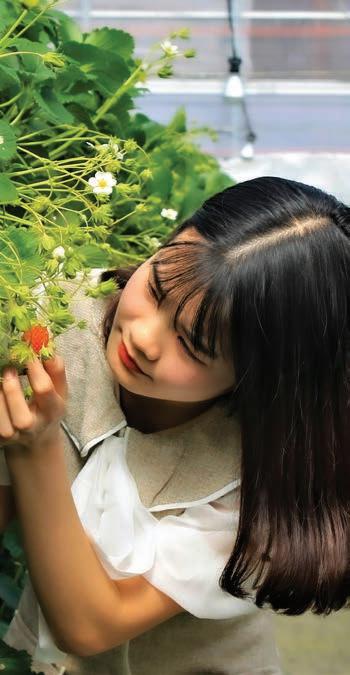
Harvesting has to occur when the weather is dry. The fruits can be harvested as soon as it is ripe to prevent it from rotting on the plant.
When harvesting strawberries, gather the ripe fruits in the morning.
Refrigerate it as soon as possible to ensure the fruits’ longevity.
Once the harvest season has been completed, cut the old leaves down and remove the mulch to prepare the plant for the next season.
The key to quick intervention is constantly monitoring your crop. Insects such as spider mites or nematodes are common strawberry pests.
There is a variety of insecticides that are safe to use on strawberries.
Birds can also destroy a crop as they feed on the fruit.
Growing plants under shade netting can protect your crop, improve the quality of fruit and boost your yield, but erecting structures can be costly.
The effect of coverage means protection from pests, birds and sun damage.
Common diseases that affect strawberry crops are Botrytis rot, Verticillium wilt, and leaf disease. Of these, Botrytis is the biggest enemy, but luckily this grey mould can be controlled with fungicides.
Keep an eye out for plants showing signs of disease. If plants don’t improve, remove diseased plants.

If you do not have space, you can look into vertical gardens as an alternative way of growing (Source: Thomas Mengwasser on Pexels)

Sources
Human, J.P. and Evans, E.P. (1989) Strawberry production in South Africa, ISHS Acta Horticulturae 265: International Strawberry Symposium. Available at: https://www.actahort.org/books/265/265_125.htm#:~:text=Approximately%20300%20hectares%20of%20strawberries,30%20t%2Fha%20are%20obtained.
Kriel, G. (2023) Strawberriesfruit farming in South Africa, Strawberries - Fruit Farming in South Africa. Available at: https:// southafrica.co.za/strawberries.html
Strawberries production guide (2023) Directorate Agricultural Information Services. Available at: http://www.dalrrd.gov.za/ phocadownloadpap/Brochures_and_Production_Guidelines/Brochure%20Winter%20squash.pdf
Strawberry grow guide (2023) GrowVeg. Available at: https://www.growveg.co.za/plants/south-africa/how-to-grow-strawberries/

restoration can be done in a variety of ways that are welldocumented and taught globally. But, although these restoration treatments are widely used, they are often not successful in the long term. “It seems that there is more to successful habitat restoration than just mere methodology,” says Ken Coetzee of Conservation Management Services (CMS).
Commitment makes a difference Ken and his partner, Wallie Stroebel, are based in George in the Western Cape, but they have built up a good reputation throughout Africa for habitat restoration. CMS’s success is based on training local communities to not only use proven methods of restoration, but also to be committed to making a difference and to cultivate a land care ethic to restore the land, no matter who owns or uses the land.
“This commitment ensures that there will be continuity and maintenance of the restoration interventions that are required to achieve the objective of habitat improvement.”
He believes this commitment ensures a deeper level of involvement, ongoing monitoring and the necessary adaptation and modification of the interventions as the climate and variations of the site dictate.
Success depends on the detail Success thus depends on a continuous hands-on approach, rather than leaving the restoration and follow-up to the mercy of restoration team supervisors. “Although they may be adequately experienced, they seldom understand or can deal with the finer but essential details of what they are implementing.”
These finer details determine the success of a restoration project. Two examples: Months of work to install expensive gabions (wire cages filled with rocks) to prevent further erosion of a gully can be wiped away if the water can find its way beneath the gabions. Attention to detail, such as digging the foundation deeper, can prevent this. Also, the costly and time-consuming removal of an invasive cactus species will be wasted if even one of the plants or part of a plant is left behind as it will simply sprout and flourish again.
“The supervision of restoration interventions must be continuous, with each phase carefully checked in detail to ensure the necessary tweaking is done.”
His experience has taught him that this type of technical input is usually above what can be expected from local restoration work team supervisors.
 by Tisha Steyn
by Tisha Steyn
This is a good plan for slowing down run-off water but because it was incorrectly installed, it is ineffective.
Don’t wait, innovate
There are two ways to approach restoration work: you can approach it scientifically and do extensive research first, or you can immediately innovate a plan to curb erosion and stop the site from further deterioration.
“Whatever approach is followed, the methods used should always be based on the best information available, but do not allow natural landscapes to deteriorate while you wait for science.”
Innovative experimentation, based on previous experience, is the only practical course of action. Rather act with imperfect knowledge to prevent the loss of biodiversity and abiotic resources in the soil.
“That is another reason why restoration cannot be left entirely in the hands of the implementation teams, as practical knowledge derived from trial and error can play a huge role in the success of restoration activities.”
A stitch in time
There is an old saying that a stitch in time saves nine … This is also true about follow-up maintenance of restoration sites to determine whether the effort was successful or needs intervention.
“Water will always ‘try’ to find a way to get around an erosion control structure and in the process
flood and destroy planting hollows or create new erosion gullies at the ends of contour berms.”
It is important to inspect rehabilitation sites, especially after rains, to determine whether any damage was done and to immediately repair or maintain previous work. “Regular maintenance is thus critically important,” says Ken.
Local supervisors must be properly briefed about the need for follow-up maintenance. “Time must be devoted to doing typical or required maintenance wherever restoration interventions are installed. The maintenance is usually quick to do, provided that the restoration sites are frequently visited as this will eliminate other and even bigger problems from occurring.”
When a restoration project is planned, it is good practice to schedule one week per month to do follow-up maintenance wherever it is


This contour berm was breached by flooding water, but by simply shovelling the silt out of the trench and repairing the berm, the structure will again be functional.
needed most. “This scheduled action will help ensure that the desired habitat improvement will occur and that the interventions will have the best chance for success.”
He believes follow-up maintenance is not only an essential part of the restoration project but also the most critical part. “One frequently comes across examples of where well-intentioned restoration efforts contributed to the further degradation of the site, simply

This is a simple fixed-point method to photograph the same section of vegetation over a period, as the series of photos will provide a valuable and completely repeatable visual comparison for any restoration site.
because followup inspection and maintenance did not take place after the initial work was done.”
If there is no intention (or finances) to do follow-up maintenance, then the restoration project should not be attempted. This may seem to be a negative approach, but restoration work is a costly activity and the typically insufficient funding that is usually allocated for it must be used in the most costeffective way possible. This means that the initial intervention efforts must be followed up by inspection and maintenance, until the site is fully rehabilitated, no matter how long this may take. This implies the fullest commitment of all involved and sustainable funding to see the project through to its completion.
One must continuously walk through the restoration treatment sites, particularly after heavy rains, making notes about the repairs that may be needed, the mulch that may need to be reinforced and the other actions that may improve or speed up the restoration success. Failing to do this follow-up will certainly lead to the failure of the initial restoration effort.
Check the success or failure
The restoration projects must be regularly monitored to determine their success. This can be done by taking photographs from a fixed point at regular intervals. The series of photographs will record the success or failure of an intervention. This will help to avoid the same mistakes in future and will ensure the best use of the available funding.
Photography offers the best way in which to record progress at fixed points within a rehabilitation area, as these will provide useful information about the plant cover, which species survived best, the composition and cover density.
“It is more important to evaluate the overall success of the methods used to improve the habitat, than to measure the detailed effectiveness of each individual intervention.
“In addition to establishing whether the methods used are effective or not, one should collect information about processes such as water infiltration, the build-up of plant litter, vegetation cover changes, the development of healthy topsoil, the incidence of important invertebrates and general soil surface conditions.”
Tell others about it
Ken also believes the experience of practitioners must be communicated as widely as possible. “This knowledge must be shared with those who need it most if landscape restoration is to become a new way of looking at our natural resources.
“Uncommunicated practical experience is lost when the practitioner moves on, changes vocation, or dies. We simply cannot afford to lose this kind of knowledge any longer while forests decline, rangelands desiccate, and alien plants advance on the remaining natural wildlands.”
People can be educated at field days, farmers’ meetings, restoration workshops and student excursions, during which the methods and results of restoration interventions can be shared.
Contact details:
Conservation Management Services
Ken Coetzee and Wallie Stroebel
Ken: (+27) 76-227-5056 or consken@mweb.co.za Wallie (+27) 82-493-1441 Website: www.conservation managementservices.co.za

Restoration practitioners must use every opportunity to spread knowledge about the principles and methodology of landscape restoration.

Article supplied
Balanced crop fertilisation is a crucial aspect of agricultural productivity, and it can be especially important in Africa, where many farmers struggle with low soil fertility and limited access to fertilisers.
Here are some key points to consider when implementing balanced crop fertilisation:
The first step in balanced fertilisation is to test the soil to determine its nutrient content and pH level.
Based on soil test results, a grower can create a nutrient management plan that specifies the types and amounts of fertilisers to apply to each crop. This
plan should take into account the specific needs of each crop and the timing of fertiliser application.
Farmers should prioritise the use of fertilisers that are rich in the specific nutrients that their crops require, such as nitrogen, phosphorus, and potassium. Usually, in Zambia, farmers use urea as a source of nitrogen and compound NPK, as a source of phosphorus, but neglect the potassium. Potassium chloride, or muriate of potash (known also as MOP), is the most concentrated source of potassium.
In addition to chemical fertilisers, organic matter is also a valuable source of nutrients for crops and a powerful soil conditioner, that positively affects soil biological activity, soil structure, and water retention properties. Organic matter can be incorporated into the
soil using cover crops, crop residues, and animal manure.
The timing and placement of fertilisers also have a significant impact on crop yields. Applying fertilisers at the right time can ensure that crops have access to the nutrients they need at critical growth stages. Additionally, placing fertilisers in close proximity to the crop roots can increase the efficiency of nutrient uptake.
Overall, balanced crop fertilisation requires careful planning and management. However, when done properly, it can help to improve soil fertility, increase crop yields, and ultimately enhance food security for millions of people across the continent.
For more information, visit the United Fertilizers website at https://ufertilizers.com/about

Different identification or branding methods for livestock include ear tagging, ear notching, tattooing, hot branding, freeze branding, and microchipping. Each method has its own advantages and disadvantages, and the choice of method may depend on factors such as the type of animal, the intended use of the animal, and local regulations. Ultimately, the goal of livestock marking or branding is to provide a permanent and reliable means of identification of individual animals. Each of the aforementioned approaches will be unpacked in this series.
Ear tags are widely used as a method of identification for livestock. A special tool is used to secure the tag to the animal's ear, and they are typically made of plastic or metal. Ear tags are convenient for large herds because they can be read from a distance. Information such as the animal's sex, year of birth, sire, dam, and even a herd or premises number can all be displayed clearly on an ear tag.
Easy indicator of gender
There is no need to waste time identifying the gender of each animal. For example, insert the primary tag in left ears for males and in right ears for females.

Ear tag applicator showing a properly inserted tag. (Source: www. fruugo.co.za)

Ear tags can be found in a wide variety of shapes and colours. (Source: www.cdnangus.ca)
Specify a birth year Livestock do not have to be captured to check their teeth for their estimated age. A farmer will be able to read a tag's number from eight metres away. Ultimately, this can increase the rate at which decisions like selecting, sorting, culling, and breeding are made.
Options:
• Put each year in a different colour tag. Yellow tags, for instance,
indicated animals born in 2020 and blue for animals born in 2021.
• Use the year of birth as the first identifier in the series. Tag 17 275, for instance, shows that this particular animal was the 275th to be tagged in 2017.
Sire and dam markers
Ear tags eliminate the need to peruse livestock records to find this information. For instance, here are three approaches:

(Source: Pixabay by MabelAmber)
• A second ear tag can be a different colour for each sire, for example a blue for sire XYZ and purple for sire ABC.
• The offspring should be tagged with the names of their sires.
• Use a marking pen to handwrite the female's tag number on the offspring's ear tag. If you need to save space on the tag, write the information on the tag's inner side.
Indicating multiple offspring for livestock such as goats and sheep
This ear tag speeds up the process of separating livestock for sale. This saves the farmer time searching through old archives. You can do this by giving each set of offspring a different colour. To show how many offspring the dam had, colour them all the same.
For example:
Red = single Green = twin Blue = triplet
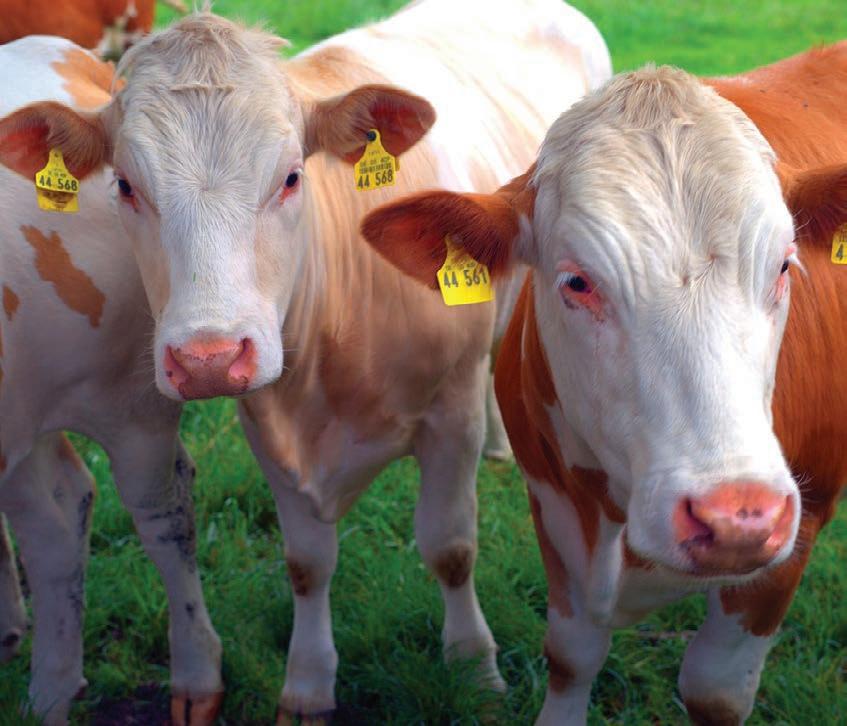
disadvantages of using ear tags
Due to the potential for one tag to be lost, it is suggested that two tags be used (one in each ear). Other disadvantages include tags getting torn off, and the site of the tag can become painful or infected in some animals.
Animal confinement
Make sure the animal is safely restrained so it cannot move its head during the tagging procedure. Both the animal and the person tagging it benefit from a restriction on head movement during the process.
Farmers can herd cattle more efficiently with a cattle chute, halter, and/or nose lead. Keep pigs in a small pen and secure them with hog boards or a hog snare. Hold sheep and goats securely by the head by using the correct technique.
Disinfect the area around ear tag Hygiene plays a key role in warding off infections. Use rubbing alcohol or another disinfectant to clean the applicator and the ear before inserting the tag. The ear tag applicator
Insert both halves of the tag into the
Position the tag in the ear correctly. (Source: www.merck-animalhealth-usa.com)

applicator. Both the stud and its panel/ button must be under the corresponding clips. Make sure that the pin of the applicator is not damaged in any way. Before tagging the animal, make sure the applicator is properly aligned by closing it until the two halves meet; the stud should be in the centre of the hole. Tag applicators should be regularly serviced, and spares should be readily
available in case of malfunction. An animal might be frightened by the noise made by an old, rusty tag applicator, or by the difficulty of using the device.
Position for placing tags
It is important to pick the right spot on the ear for the tag. Tags should be placed in the middle third of the ear, between the upper and lower veins. By

(Source: www.amazon.in )
avoiding these veins, you prevent severe bleeding. Do not touch the concha (the ear's central ridge of cartilage) either. If the ear tag breaks through the skin of the ridges, it may cause infection or permanent disfigurement. You run the risk of the tag snagging and being ripped out if you place it too far outside the advised area, and you run the risk of pinching or necrosis if you place it too far inside the ear. Electronic identification (EID) tags should be applied so that the male visual panel is on the outer back of the
ear and the female EID button is inside the ear canal.
To tag the specified spot in the ear, simply insert the applicator there. Release the applicator's snap after you have closed it quickly and securely. Verify the tag is inserted properly, comfortably, and securely. Take down all of the pertinent animal information.
Keep an eye on the tagged area for
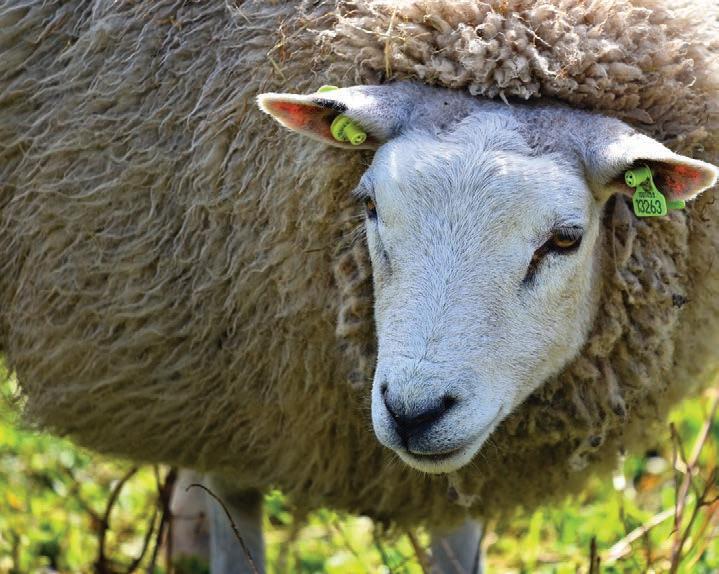
any signs of infection after the animal has been identified. To avoid infection, hydrogen peroxide should be applied topically to the ear tag puncture for five to seven days. In the event of a severe infection, veterinary assistance should be sought.
–




Highway, o Nangwenya Road, Showgrounds; Tel: 0211-254497 / 254024; E-mail: admin@livestock.co.zm www.nosering.co.za
Zambian law and policy on the ear-tagging of livestock: The Registrar will determine the specific design for the animal identification mark, which may include a symbol, number, letter, or some combination thereof. Cattle, goats, sheep, pigs, and donkeys all need to have eartags placed on both of their ears.
For more information please visit the link: https://commons.laws.africa/akn/ zm/act/si/2020/34/media/publication/zm-act-si-2020-34-publicationdocument.pdf
References
Farm and Dairy Staff. (2017) How to tag livestock properly. Farm and Dairy. Available at: https://www. farmanddairy.com/top-stories/howto-properly-tag-livestock/440560. html
Premier1Supplies. (2017) How Ear Tags Can Help You... An Essential Tool in Livestock Management. Available at: https://www.premier1supplies.com/newsletters/0118-2017-allspecies.html
Emendel. (2018) How to properly tag cattle. Autodesk Instructables. Available at: https://www. instructables.com/How-to-ProperlyTag-Cattle/


The production of meat for human consumption typically involves the use of broiler chickens in breeding programmes within the poultry industry. Because broiler chickens are bred to mature at a younger age and produce more meat per animal, they are frequently used in the production of meat for commercial purposes.
The rapid growth and high meat yield (high meat-to-bone percentage) of Ross chickens have made them a popular broiler chicken breed. Raised for their meat, they are a common commodity in industrial poultry operations.
Ross chickens are highly sought after for their high protein, low fat, exceptionally tender, and juicy meat. When a lot of high-quality meat needs to be produced quickly, many farmers turn to these chickens.
Ross characteristics and growth rates
The Ross is your standard white chicken with a red comb. The tail stands erect and is brilliant white. Ross's legs are relatively strong and sturdy, allowing
them to walk and maintain an active lifestyle. Thigh meat to chest meat is in good proportion. The average weight of a day-old Ross chick is forty-two grammes. At forty-one days of age, these chickens can reach their maximum live weight of 2,2 kilogrammes.
Ross chickens are popular among both smallholder farmers and commercial poultry operations due to their large size and docility. Poultry farmers around the world appreciate Ross chickens not only for their meat, but also for their resilience and versatility in a variety of climates.
The meat production and maturation rate of Cobb chickens are unparalleled. Because of their low feed waste, they are frequently used for industrial meat production. Cobb chickens are highly sought-after due to the popularity of their meat.
Cobb characteristics and growth rates
A Cobb chicken can reach a 2 kilogrammes live weight in only forty-two days. All the Cobb’s feathers are white.


The white tails and heads of males and females are identical. The comb and wattles are a bright pink colour, and the comb is of the single-type variety. This bird lacks foot feathers and has a yellowish beak and legs.
The Cobb is capable of low-density feed conversion. This breed is known
for its efficiency, even when fed a cheaper diet. The Cobb is reliable and productive, no matter the season or climate. The good temperament and activity levels of Cobb chickens are among the lowest of all chicken breeds. They perform well in regular, temperature-controlled sheds. To en-
sure proper development, these birds should not be allowed to free-range but rather fed a commercial diet.
Hubbard
Hubbard chickens are widely used in the meat industry because of their rapid growth and large size. In addition, they have a reputation for being docile and friendly, making them ideal for small flocks in the backyard. There is evidence that this breed is more disease-resistant than others, and that it can thrive in free-range conditions.
Hubbard chickens have a high feedto-meat conversion ratio, meaning they turn their food into meat in an efficient manner. This makes them a more environmentally friendly choice for commercial meat production. Hubbard chickens are bred for their tasty and tender meat, which is used in restaurants and homes alike.
Hubbard characteristics and growth rates
Hubbard chickens’ range in size from medium to large and are characterised by a round, plump body, broad wings, and a long, full tail. Its comb and wattles are red, and its feathers are typically white or brown, though other colours are possible.
The average weight of a broiler chick is only 55 to 70 grammes. These chickens are raised as free-range broiler chickens on industrial-scale
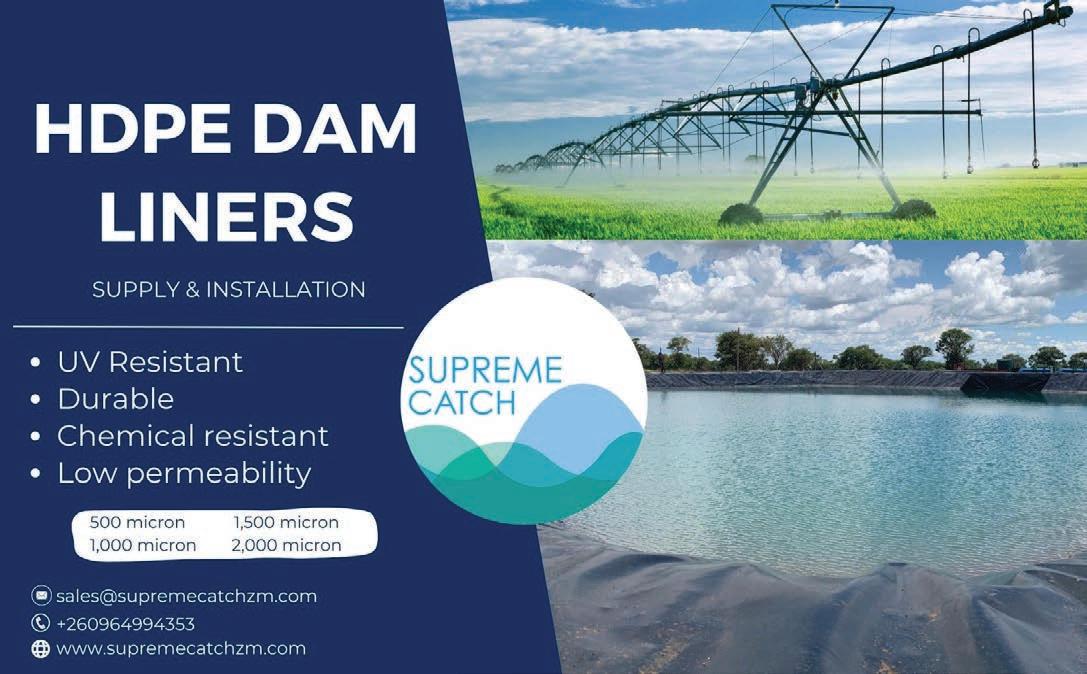

chickens are known for their fast growth and high meat production. (Source: agribusinesszambia.com)

The Cobb chicken was developed in the United States. (Source: poultryworld.net)

poultry farms. They typically gain an average of 1,8 to 4,5 kilogrammes in weight when fully grown. Even though they are not great layers, a Hubbard hen can yield 200 eggs in a year. Hubbard chickens reach their full growth potential between seven and fourteen weeks of age.
Arbor Acres
In addition to their rapid development and abundant meat production, Arbour Acres chickens also make excellent use of their feed. Their meat is tender and flavourful because of their developed breast muscles and low fat content. Because of these qualities, they are frequently used in industrial meat production.
The breed's rapid growth and excellent feed conversion make it ideal for mass meat production. The Arbor Acres
The varieties found in Hubbard are white, red, brown, black, grey, striped, and multi-coloured. (Source: hubbardbreeders.com)
chicken is popular for backyard flocks not only because of its useful characteristics but also because of its placid temperament and docile nature.
Arbor Acres characteristics and growth rates
The Arbor Acres breed is characterised by a round, plump body and short, stocky legs. Their shanks have a good amount of meat on them relative to the amount of bone, and their legs are a bright yellow. This breed is distinguished by a small, red wattle and a single comb.
While the Arbor Acres is not the flashiest chicken, it is a good choice for those looking to raise chickens for meat because of its dependability and versatility. Arbour Acres achieves a remarkable 2,7 kilogrammes of live body weight gain in the first six weeks of life. Due to genetic improvements, their maximum weight at eight weeks is 2,9 kilogrammes. Arbor Acres hens do not lay eggs like native chicken breeds.

S. (2022) Chicken breeds. ZPoultry. Available at: https:// zpoultry.com/category/chickenbreeds/




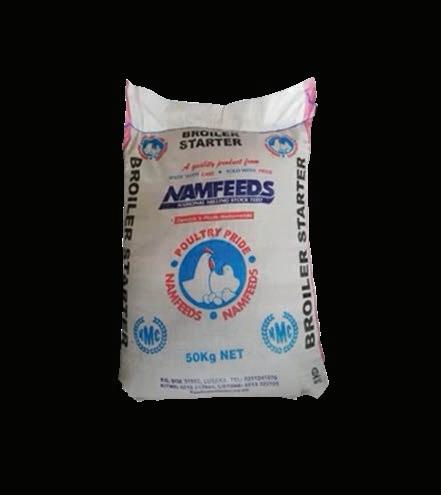



and more powerful tractors seems to be heating up, reports Profi, a leading agricultural technology magazine in Europe. They say there are multiple pictures circulating of what appear to be a new and more powerful Case IH Quadtrac and John Deere RX.
“While there are lots of talk of smaller autonomous vehicles working in swarms, there is still very much global demand for extra horsepower to pull wider working kit. Just a couple of weeks ago, Claas unveiled its biggest ever tractor range, the two model Xerion 12 with the flagship having a 15,6-litre Mercedes-Benz motor peaking at 653 hp (486,9 kW).
“As part of the development of the new Xerion, Claas quizzed current and potential customers and one of the questions asked was how much power they wanted. The consensus was 650 hp was sufficient, but it seems Case IH and Deere users are demanding even more power.
“There is nothing official from either Case IH and John Deere, but both manufacturers appear to be preparing to smash through the 700 hp barrier.”
In Germany “spy” pictures were taken of a Case IH with the numbers 715 on the bonnet. There is even talk of the new king Quadtrac delivering 780 hp (581,6 kW).
Some faraway grainy pictures are also circulating online of what appears to be a John Deere with larger tracks, frame, and bonnet than the current John Deere 9RX640. Speculation is that there can be a 10RX with an 18-litre engine in the making.
Profi reports: “We are unable to confirm anything concrete at the moment, but the new Quadtrac will reportedly break cover at the Farm Progress Show in Illinois at the end of this month, followed by the European premiere at Agritechnica in November.
“We will have to wait and see if John Deere has mapped out similar launch venues for the new, bigger RX, although one tractor of the trio we confidently expect to see at Agritechnica is the new Claas Xerion.” (Source: Profi )



New Holland cares:
TL5 for wheelchair users
New Holland has developed a TL5 that is accessible for people with lower limb disabilities.
New Holland may be the first mainstream manufacturer to develop a tractor that is accessible for wheelchair users.
Produced at CNH Industrial’s Curitiba plant in Brazil, the TL5 Accessible was created together with mobility company Elevittá, Arteprima and Senai, with assistance from a New Holland customer who uses a wheelchair.
It is optionally available on new 80, 90 and 100 hp (59,6, 67, and 74,5 kW) models. The platform can be retrofitted to tractors from 2019 onwards.
How it works:
The joystick operated lifting platform enables the operator to enter and exit the tractor unaided. He can then access the tractor seat and use the adapted machine controls. The internal space is said to be the same as a standard TL5.
“People with disabilities, including those who live and work in the countryside, want to remain as independent as possible,” commented Eduardo Kerbauy, Vice President of New Holland Agriculture for Latin America, who added that the modified TL5 will help eliminate barriers that today make it impossible for many farmers to get on a tractor. (Source: CNH)






The world’s first wheelchair accessible tractor from New Holland.
LEMKEN:
Work 10 m wide with the new Rubin 10 LEMKEN rounds off the top end of its range of the proven Rubin compact disc harrows working ten metres wide, with a disc diameter of 645 millimetres. Like the smaller Rubin 10 models with up to seven metres working width, the Rubin 10/1000 boasts a symmetrical disc arrangement for fuel-efficient operation without side draft.
This new compact disc harrow can be hitched via a ball coupling or drawbar eye, and hydraulic support is available to make attachment and detachment easier. The two rows of serrated concave discs allow thorough incorporation across the full surface width from a soil depth of only seven centimetres.
The 14-centimetre line spacing ensures blockage-free work, even with large volumes of organic matter. Each concave disc of the Rubin 10/1000 is equipped with damped kickback for overload protection, which reduces loads on the frame.
The new Rubin offers many more advantages, for example its working sections feature a pendulum type suspension to ensure optimal following of the field contour. On very uneven terrain or when working on slopes, the optional iQ-Contour pendulum compensation guarantees optimum surface adaptation. In addition, the hydraulic
depth adjustment makes it possible to respond to changing conditions, and the working depth can be changed while driving.
During the turning process, the implement is supported by the roller, which has particularly strong bearings. Thanks to its wide contact area, the machine is firmly supported and minimises soil compaction.
The machine is folded in from the cab to a transport width of three metres. (Source: LEMKEN)
fields where wheat, winter canola and peas have been harvested recently. The largest field covered an area of 161,36 hectares. The net operating time was 23 hours and 36 minutes.
The average working speed was 32,6 hectares per hour, and the fuel consumption was 3,1 litres per hectare during the operating time of 23 hours and 36 minutes.

769,36 hectares. That is the area cultivated with the Bednar Swifterdisc XE 18400 MEGA cultivator and a John Deere 9RX 640 tractor during a 24-hours record attempt in Romania. The tractor-cultivator combination covered a substantial extra 125,36 hectares more than the 2007 record.
This 24-hour record was achieved during an event organised by Bednar in cooperation with the Romanian Bednar and John Deere distributor, IPSO Agricultură.
Romania was chosen due to the extensive fields. To show the real use and potential of the combination, the record attempt took place in six different

During that time, the set travelled a distance of 450,7 kilometres, and the total fuel consumption reached 2 355,6 litres. The working depth set on the disc cultivator was 7 centimetres. Downtime required for essential maintenance and refuelling was only 24 minutes. The drivers swapped during work, for example, when the machine was turning at headland.
Bednar has specialised in the production of large working width machines from the very beginning. The first such a machine was in 2003: the wide span Swifter SM seedbed cultivator.
“We can see the increasing interest for such machines, which led us to introduce the Swifterdisc XE_MEGA series in 2021,” says Ing. David Ryčl, Marketing Director of Bednar. “It currently comprises of three models with a working width from 14,4 to 18,4 metres. I am very pleased and proud of what we managed to accomplish with our machine during the 24-hour operation. It does not only confirm the machine quality that resisted such a high load, but above all, the high productivity and effectiveness it enables us to achieve.”
The machine turned fast at headlands thanks to the ability to lift the disc working section. It turns using the rear packers, the front support wheels, and the transport axle. During work, the first axle is lifted to achieve a higher down pressure on the disc section. (Source: World Agritech)
Watch the video here: https://www.youtube.com/ watch?v=gjaJEkH4DXE


Althoughamaranth is regarded by many as an unwanted plant, at least fifty tropical countries around the world grow it as a vegetable, and not only in their backyards. In the humid lowlands of Africa and Asia, it is probably the most widely eaten boiled greens.
During the production season, the leaves provide African communities with at least a quarter of their daily protein. In parts of West Africa, the young seedlings are pulled up by the roots and sold in town markets. Other parts of Africa also rely on them and in Southern Africa, it is well-known and widely used. Many of the more than fifty Amaranthus species in both tropical and temperate regions are eaten, but only a dozen or so can be considered domesticated.
What is amaranth?
The Amaranthus species belong to the family Amaranthaceae. Common names in Afrikaans are hanekam, misbredie or varkbossie, in English pigweed, bush greens, or green leaf. In Congo, the Amaranthus viridis in Kinshasa Province is known as bitekuteku, in Ghana as madze, in Sierre Leone as grins, in Nigeria as efo and in Malawi as bonongwe.
Amaranthus species are herbaceous, short-lived annuals. The dwarf forms grow about 60 cm tall, but some variants grow up to 2 m. The stems are mostly upright, thick, fleshy, some-
times grooved, and sparsely branched with alternate leaves. The leaves differ in shape, and are mostly green, red, or purplish in colour. The flowers or inflorescence are red to purple and borne on spikes. The seeds are small, shiny and either black, brown, or white. Species with white seeds are used as a cereal, while the species with darker seed are used as leafy vegetables.
Distribution
Amaranthus cruentus (A. hybridus), A. blitum and A. dubius are the most widely grown in Africa and are particularly important in West Africa.
One of the least known and least developed species is Amaranthus thunberghii, a semi-wild species native to Southern Africa, that grows very fast and is resistant to water stress.
Amaranthus cruentus has a long stem and bears a large deep-red inflorescence with dark seeds, and is also used as an ornamental plant. This plant, like maize, sweet potatoes, and peanuts, was evidently brought from America to Africa by Europeans. It has probably been used as a vegetable since the 16th or 17th centuries.
Eating amaranths
Vegetable amaranths are probably the most widely eaten boiled greens throughout Africa’s humid lowlands. The leaves and stems make excellent boiled vegetables with a soft texture, mild flavour, and no trace of bitterness.
Food value
The nutritional quality of amaranth greens is equal to leafy vegetables like spinach, but with more minerals like iron and calcium. Protein levels in the leaves are reported to be around 25%, which makes them useful supplements to cereals and root foods. Vegetable amaranths are important sources of


vitamin C as well as abundant precur sors for producing vitamin A, which is necessary for good eyesight.
thunberghii the nutrients as a leaf-protein con
vitamin C as well as abundant precursors for producing vitamin A, which is necessary for good eyesight. Heating or treating the Amaranthus thunberghii extract with acid triggers the nutrients as a leaf-protein concentrate. Its leaf protein is highly extractable, and in the process, most other nutrients are extracted as well, including provitamin A, polyunsaturated lipids (linoleic acid), and iron. The resulting leaf-nutrient concentrate is especially useful for young children and other persons with particularly high protein, vitamin A, and iron needs.
Amaranth is a multiple-duty crop. Leaves, young stems, and young inflorescences are eaten as potherbs. The plant material softens up quickly and thus requires only a few minutes of cooking. The leaf is used in soups and stews. Rubbed through a sieve, the leaves can be served as a puree. The fresh young leaves and leaf stems can be used raw in a salad.
It is also popular as a microgreen in high-end restaurants.
The mature flowers are not edible but utilised for their seeds. Several spe-
cies, including Amaranthus cruentus, A. hypochondriacus, and A. caudatus are grown for their grain-like seeds. These seeds have the same carbohydrate content as wheat but have more protein and oil. In many areas, seeds are dried out and milled into flour for making gluten-free bread and pancakes. The flowers are good for honey production.
The vegetable amaranth can also be used in feedlots for cattle or other intensively reared animals, including pigs.
It has been reported that women in Queenstown in the Eastern Cape, South Africa eat the greens, believing that the young tops promote the flow of a breastfeeding mother.
When boiling red leaves, the pigment that is released in the water must be discarded as these can contain anti-nutritional factors which prevents the ability to utilise nutrients. Young and very tender leaves have the least amounts of these undesirable materials, which is why the plants should well-watered and fertilised, and picked early and often.
Amaranths are a pioneer species which quickly colonises disturbed land. They produce plenty of seeds, which germinate rapidly, and the seedlings soon appear, so the first crop of leaves is sometimes harvested within three weeks of planting. New leaves keep appearing and up to 10 tonnes of edible

greens per hectare in a period of 30 to 40 days have been recorded.
Amaranths grown as vegetables need a long, warm growing season in hotter climates. The crop thrives in areas with high rainfall. Where it is grown in small garden plots, it is often watered by hand. Without irrigation, it needs at least 8 mm of rainfall per day throughout the season.
Humid lowlands below 800 m are said to be most suitable for cultivation, but the crop can be grown in higher areas.
All species are very sensitive to cold weather and the plant stops growing at about 8 °C. Most species are tolerant of high temperatures and thrive within a temperature range of 22 °C to 40 °C.
Although most amaranths tolerate different soils, they thrive in light, sandy, well-drained, and fertile loam with a high organic content and adequate nutrient reserves. The optimum pH range is 5,5 to 7,5, but some cultivars tolerate more alkaline conditions. To increase leaf growth, the growing tip is pinched out to force branching with new leaf growth and suppressing early flowering. Watering, and fertilisation with manure, compost, or nitrogen fertiliser during the growing season, stimulate leafy growth and boost yield, generating the greatest quantity of the tenderest leaves.

The plant grows very fast, and the leaves can be picked many times during the growing cycle of eight weeks. (Source: Pixabay)
The plant can grow in shade near other plants, including bananas, cassava, and trees. Amaranth greens are mostly grown, harvested, and marketed close to home, and women are the prime producers. The surplus is sold at village markets.
In warm climates it can be grown all year round and because of its short lifecycle of about eight weeks, it is suitable for multiple cropping. Amaranth is also highly suitable for incorporation into crop rotations as it is usually unaffected by common soil diseases such

Pinching out the top of the plant encourages the growth of more branches, and thus more leaves, and prevent early flowering. (Source: Pixabay)


as nematodes, fungal, and bacterial wilt.
Limitations
The small grains are tricky to sow, but mixing them with sand and sowing the combination, ensure that they are uniformly distributed. Hard rain can wash the seeds away, but covering with a thin layer of grass mulch, which is removed after germination, can solve the problem.
The seeds can also be sown in seed trays and the seedlings planted out when the conditions are favourable.
Pests and diseases
Slugs and snails, as well as leaf-eating insects like grasshoppers and beetles, can damage the leaves. Covering the crop with netting is one solution, but it is not widely used.
The plants are susceptible to viruses as well as fungal diseases, especially when they are young and when the weather is damp. If the seedbeds are well drained and located in sunny sites, it will eliminate some problems.


References
National Academies of Sciences, Engineering, and Medicine. 2006. Lost Crops of Africa: Volume II: Vegetables. Washington, DC: The National Academies Press. https:// doi.org/10.17226/11763. https://nap.nationalacademies.org/ read/11763/chapter/3#51

Apumpkin is a well-known delicious and nutritious vegetable, and it is easy to grow for yourself or for the market. They are sensitive to cold, that is why you must sow seeds directly well after the danger of frost is past and the soil has thoroughly warmed to a temperature between 18 and 35 °C.
First make sure your soil is healthy. If pumpkins do not thrive, the problem often lies in the soil. Healthy garden soil makes healthy plants that are less vulnerable to pests.
What to do to make the soil healthy
Clear out rocks and debris: To dig up grass, use a spade to cut the sod into small squares and pry from the planting area.
Loosen the soil: If it is your very first garden, loosen the soil to a depth of at least 20 cm so that roots can reach down.
Add organic matter: Compost and aged manure not only feed the soil with nutrients but also drains well, loosens the soil to provide more oxygen to plants, and stabilises and anchors plant roots. Spread a minimum of 5 cm of compost or aged manure onto your soil.
If it is your first garden and you need better soil, we recommend working in the compost. If your garden is established, we recommend a no-dig approach and leaving the compost on
the surface. This exposes fewer weed seeds and does not disturb the soil structure. Let the worms do the digging in for you!
Level the garden bed: Rake or hoe the surface to level it.
How to plant the pumpkin:
Vining pumpkins require a minimum of 4,6 to 9,3 square metres per hill. If you are short of space, ensure the vines are directed to the outer edge of the garden bed.
Sow seeds either in rows 26 m apart, or plant in hills 13 m apart. A
hill does not mean the soil has to be mounded; it is a spot containing a group of plants or seeds.
Hills warm soil quickly (so seeds germinate quicker), and aid with drainage and pest control. Prepare hills by digging down 30 to 40 cm and mixing/ filling in with lots of aged manure and/ or compost.
In rows, plant seeds 15 to 30 cm apart. Once seedlings are 5 cm tall, thin to one plant every 45 to 90 cm.
In hills, plant seeds 2,5 cm deep with 4 or 5 seeds per hill. Keep seeds moist until germination. When seedlings are

5 cm tall, thin to two or three plants per hill by snipping out unwanted plants.
Plant miniature varieties 25 mm deep, with two or three seeds every 6,5 m in the row. Rows should be 20 to 26 m apart, with seedlings thinned to the best plant every 0,6 m when they have their first true leaves.
Grow them
Use row covers to protect plants early in the season, and to prevent insect problems. However, remember to remove covers before flowering to allow pollination. Bees are essential for pollination, so be mindful when using insecticides to kill bugs or fungicides to control fungi.
How much water is needed?
Pumpkins need 250 mm of water per week. Water deeply in the morning and on very hot afternoons, especially during fruit set. Avoid watering foliage and fruit unless it is a sunny day.
Also give fertilizer
When plants are about 30 cm tall, just before vines begin to run, fertilise regularly with a high-nitrogen formula. Just before the blooming period, switch to a high-phosphorus formula fertiliser. It is normal if the first flowers do not form fruits. Both male and female blossoms need to open.
How to grow a bigger pumpkin
After a few pumpkins have formed, pinch off the fuzzy ends of each vine to stop vine growth and focus plant energy on the fruit. Pruning the vines may help with space and fruit formation. Pumpkins produce main vines (from the base/centre of the plant), secondary vines from the main ones, and tertiary vines from the secondary vines. All may have flowers. Once the fruit has started to develop, prune the main and secondary vines to 3 m to 5 m and remove the tertiary vines, if so desired. Bury the cut tips in soil.
When to harvest
Your best bet is to harvest pumpkins when they are fully mature and not before. Do not pick pumpkins off the vine because they have reached your desired size.
• Harvest on a dry day after the plants have died back and the pumpkin skins are hard.
• The skin of a ripening pumpkin turns a deep, solid colour (orange for most varieties), and the stem hardens.
• Thump the pumpkin with a finger; the rind will feel hard and sound hollow. Press a fingernail into the pumpkin’s skin; if it resists puncture, it is ripe.
• Carefully cut the fruit off the vine with a sharp knife or pruners; do not

tear it. Be sure not to cut too close to the pumpkin. Leave 7 to 8 cm of stem to increase its keeping time.
• Handle pumpkins very gently, or they may bruise. Never carry a pumpkin by its stem.
Properly saved seeds should last for 6 years.
To toughen the skin and intensify flavour, cure pumpkins in a sunny spot for about 10 days in a hot area with 80 to 85% humidity.
Sources: Boeckmann, C. (2023) Pumpkin
Planting & Growing. Available at: https://www.almanac.com/plant/ pumpkins









Oudtshoorn veterinarian Dr Adriaan Olivier did a postmortem to show course participants not only how to do it, but also how to identify disease symptoms. (Source: Karoo Livestock Exports).
Gerrie Ferreira, founder and coowner of Karoo Livestock Exports based on the farm Chandelier near Oudtshoorn in the Klein-Karoo, has been exporting ostriches, livestock, and game for the past 27 years.
Since the first export of ostriches in 1996, the family business has expanded its market to more than fifty countries worldwide. Nearly half of these countries are in Africa.
During August 2023, Gerrie and co-owner and son-in-law Ockie Nel, presented the first combined practical and formal courses on Chandelier for farmers from some of the African countries they do business with.
Farmers from Tanzania, Zimbabwe, Nigeria, and Malawi attended the two courses over four days. They included Panashe Shava (Zimbabwe), Habiba Tumsah (Nigeria), Nasiru Samaila (Nigeria), Anette Schneider (Tanzania), Shepherd Ngwenya (Zimbabwe), Daniël Olagboye (Nigeria), Mustapha Ramalan (Nigeria) Leonard Mbanda (Malawi), and Alina Volschenk (Romania).
Farmers from Ghana and Uganda could not attend because the South African Department of Home Affairs failed to provide visas in time. These farmers will attend similar courses on Chandelier from 11 to 14 October.
A number of South Africans, includ-
ing Karoo Livestock Exports staff, also attended this unique opportunity to learn more about goat farming.
Ockie and Tanya van Ravensteyn presented the practical course for fifteen participants. Oudtshoorn veterinarian Dr Adriaan Olivier demonstrated a postmortem on a goat, and Dr Fanus Cilliers of Camelus Feeds presented a lecture on suitable feed for goats.
The formal Junior course for new goat farmers was attended by 35 people. This is the official, accredited course of the SA Boer Goat Breeders’ Society and was presented by Gerrie, Nicky Nell and Jan-Chris Marais, who are all instructors and judges of SA Boer Goats for SA Kalahari Reds and SA Savannas.
Although Gerrie presented courses for South African farmers in the past, this was the first time these two courses were presented to foreigners on the farm.
“Thereby Tisha Steyn

Besides goats, Karoo Livestock Exports also exports different breeds of sheep. (Source: Karoo Livestock Exports).

Gerrie Ferreira, founder and coowner of Karoo Livestock Exports, has exported livestock, ostriches, and game to more than fifty countries worldwide. (Source: Karoo Livestock Exports).
is a huge need for practical training among new goat farmers,” said Gerrie.
“This is the first time we combine the hands-on course with formal training. Both the basic training and the official training provide the basis for these farmers’ present and future goat farming.”

According to Gerrie, the farmers were shown how to handle and take care of the goats. “One might think that these farmers should at least know the basics, but one must keep in mind that they are new farmers with no background on raising goats at all.”
The farmers were shown and had an opportunity to catch a goat by its hind leg for dosing and immunisation. They were also shown how to look for external and telltale signs of internal parasites. During the postmortem, the
vet showed them how to identify the internal organs and explained their functions. “In Africa most farmers do not have easy access to vets, and their ability to identify the symptoms of a disease may save their herds.”
The production cycle was explained, including the procedure during mating to preparing ewes for lambing and the handling of newborn lambs. “It is important that the farmer must be present during lambing to make sure the lamb starts drinking immediately and does not get separated from the




ewe. It is crucial for the lamb’s survival to ingest the colostrum, which provides natural immunity against disease.”
The group was also shown how to take care of young goats up until weaning, after which the animals must be selected for either breeding or the abattoir. General handling and care of adult goats were also explained.
Dr Cilliers explained the value of the correct feed and nutrition during the different stages of the goat’s life. “It is important for the African farmers to learn how to profitably farm goats they have bought from us,” said Gerrie. “We provide complete information, also about feed and how to mix it using the ingredients available to them. In Africa, it is seldom possible to buy ready-mixed feed. It is important that they get the mix right to provide balanced feed.”
The formal Junior course is designed to teach newcomers the breed standards of the SA Boer Goat Breeders Association.
The practical part of the course was done at the George Agricultural Show, which also provided African farmers an opportunity to see what top genetics in other breeds on show look like.
Gerrie Ferreira from Karoo Livestock Exports has exported thousands of animals since the first export of ostriches in 1996.
Besides ostriches, which are still in high demand in many countries, he also exports indigenous goat species, including the SA Boerbok (Boer goat), the SA Kalahari Red and white SA Savannah. More recently, Blackberry goats that have been bred from dark-red Kalahari Reds, have also become extremely popular. He also exports milch goats and angoras.
“Because the costs are prohibitive, only valuable breeding stock is exported. We make sure all the animals we export adhere to breed standards.”
Gerrie exports animals from his own herds, but also from carefully selected other breeders in the area.
Sheep that are exported include Dorpers, Persians, Damaras and Meatmasters. Cattle breeds include the indigenous Bonsmara and Nguni, as well as Boran and Brahman, and popular dairy cattle like Jerseys, Friesians, and Holsteins.


Gerrie Ferreira intends to present more courses on Chandelier in future, as the farm is equipped with suitable facilities and ample accommodation. (Source: Karoo Livestock Exports).

During the practical course, attendees visited an ostrich breeding unit in Oudtshoorn. (Source: Karoo Livestock Exports).

African farmers Daniël Olagboye, Mustapha Ramalan, Nasiru Samaila, and Habiba Tumsah judging animals according to their good and bad qualities at the George Agricultural Show, where they did the practical part of their official Junior Course. (Source: Karoo Livestock Exports).
According to Gerrie, their clients worldwide appreciate the care taken by Karoo Livestock Exports to provide not only excellent genetics, but also complete information on how to take care of the animals. “That is the reason they keep buying from us. We have a 24-hour support line – we don’t just abandon them!”
The courses are a direct result of the exports. “Our clients approach us and rely on us for suitable training. One cannot just export the animals and forget about them and their new owners. It is our responsibility to do everything in our power to ensure that the new farmers know how to handle the animals, which include feeding and general health.”

Fifty countries, and still counting …
At present, he is exporting to more than 50 countries worldwide, including about 25 countries in Africa. These countries include Angola, Benin, Cameroon, the Democratic Republic of Congo (DRC), Egypt, Ghana, Ivory Coast, Kenya, Malawi, Mali, Mozambique, Namibia, Niger, Nigeria, Republic of Congo, Republic of Guinea, Senegal, Sierre Leone, Sudan, Tanzania, Uganda, and Zimbabwe.
“When we reached thirty countries in 2015, I realised that it was possible to export to fifty countries, and that became my goal. That major goal was reached in January this year. The next goal? Who knows?"

Animals are transported by ship or air to their destinations worldwide. (Source: Karoo Livestock Exports).















“There is a growing interest in good quality livestock as people turn to farming, not only for profit, but also for food security in uncertain times where poverty, hunger and climate change are serious threats to humankind, especially in Africa and other cashstrapped developing countries. People are starting to take care of themselves after realising governments most often have other priorities. South Africa is well-placed with indigenous animals born and bred for African conditions that easily adapt to these conditions.
“Many of the African clients are people who work elsewhere, earning US dollars, English pounds, or European euros. “They use this foreign currency to buy stock so they will have established herds when they eventually retire in their home countries.”
More courses on Chandelier
Gerrie plans to offer more courses on a regular basis on Chandelier in future. “As our number of clients and their need for training increase, we decided to offer more courses at home where we have suitable facilities, including accommodation for large groups. The animals are here, so the farmers from Africa can experience firsthand what a working farm in South Africa looks like and how it operates.
“The nearby George airport is a plus. Although we provide the courses at a very affordable price, the town and community of Oudtshoorn also gain economically.”

Owners of recently acquired goats go to great lengths to ensure their animals are safely transported to their farms, even if it is by boat. (Source: Karoo Livestock Exports).

Karoo Livestock Exports provide a 24-hour support line to all their clients. Recently Gerrie assisted a new owner by cell phone to help his new goat ewe to give birth. (Source: Karoo Livestock Exports).

Only high-quality animals that comply with the breed standards are exported. (Source: Karoo Livestock Exports).
For more information, contact Gerrie Ferreira at (+27)82-450-2110, send an e-mail to info@karooexports.com or visit Karoo Livestock Export’s www.karooexports.com
karoolivestockexports

The full group who attended the formal Junior course of the SA Boer Goat Breeders Society, which focuses on the standards of the breed. (Source: Karoo Livestock Exports).










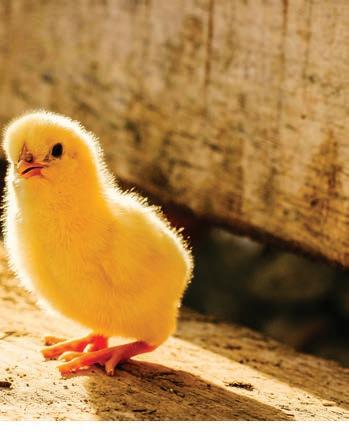







Suppliers of
input












We are a dedicated agricultural equipment manufacturer and supplier. sales@ritlee.co.za
17 Mopedi Road Unit B, Sebenza Edenvale Gauteng, South Africa www.ritlee.co.za +27 11 452 3434
Office Sales & Spares: Dan: 011 452 3434 dan@ritlee.co.za
KZN & Export: Marc: 084 453 4499 marc@ritlee.co.za
Rest of RSA: John: 073 930 3799 john@ritlee.co.za





225 Ritlee Gravity feed wood chipper & chip grinder through 8, 10, 12, 15, 20mm screen




Enhanced capacity, greater durability, versatile applications and seamless integration with BIGGER PVC PIPES from 50mm to 630mm in diameter
Corrosion & chemical resistant PVC pipes, easily connected with leak-free joints to eliminate water loss.




For more information, please contact your John Deere Financial Finance Specialist here: https://www.deere.africa/en/finance/financing/sub-saharan-financing/ www.deere.africa | africa@johndeere.com | JohnDeereAME John Deere Financial’s finance and credit products are provided in association with Stanbic Bank. *Terms and conditions apply (please follow the link to view applicable T&C’s: https://www.deere.africa/en/finance/financing/). All advertised deals are subject to credit approval and the financing bank’s terms and conditions.

